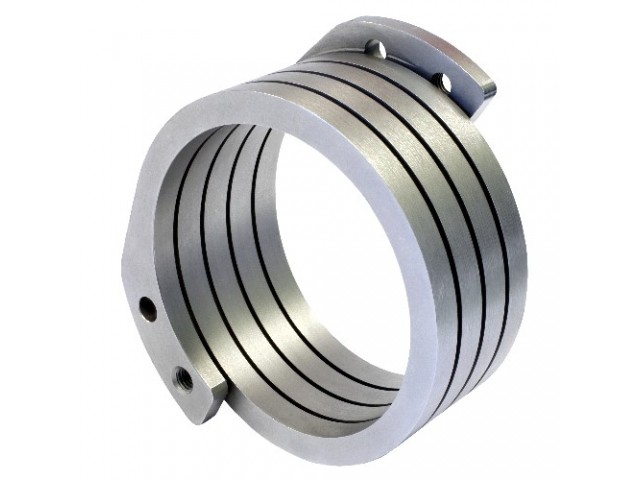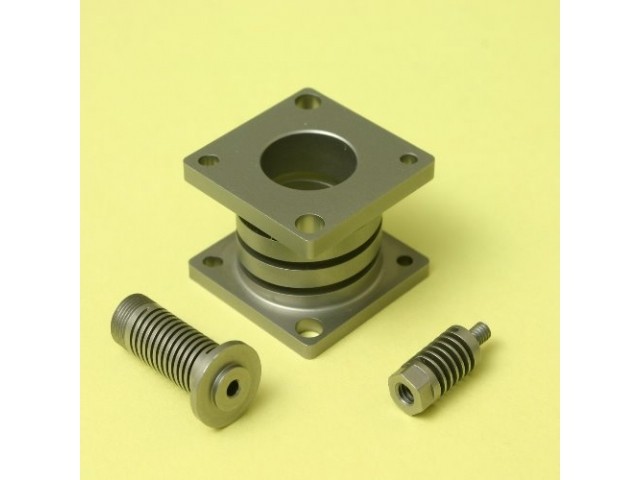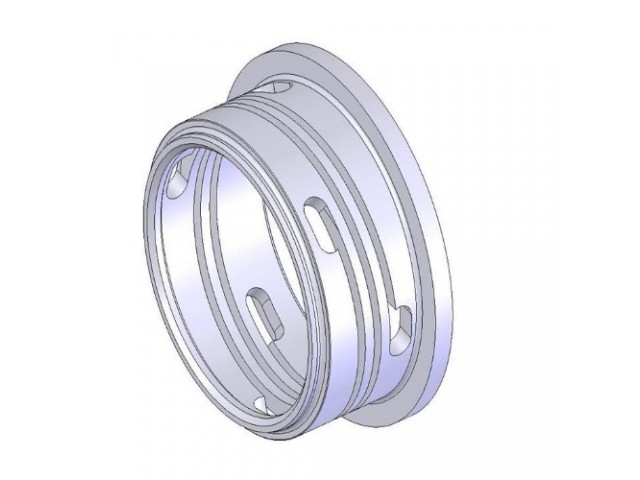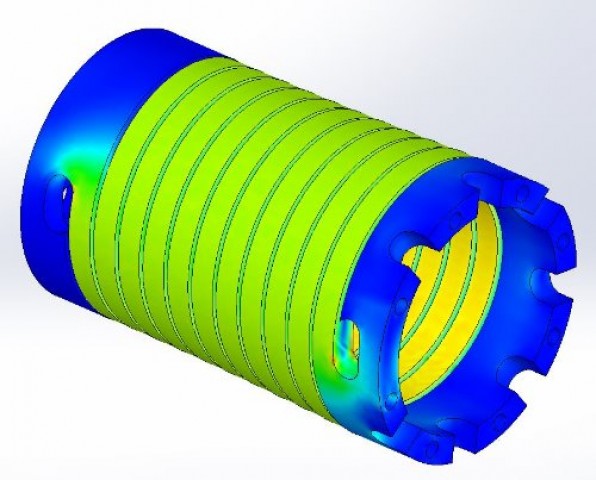
For those engineers familiar with the traditional wound spring format ABSSAC is offering a new way of looking at both spring performance and attachment. As with its wire wound brother, all types of spring format such as, compression, extension, torsion, lateral translation and lateral bending springs are available in the machined format. However, from this point the similarities between wound and machined springs stop. Machined springs can provide very precise, linear deflection rates because virtually all-residual stresses are eliminated. As a result, there are no internal stresses to overcome before deflection occurs, which can be the case in the wire wound spring. In addition to this we can offer multiple start spring coil configurations.
The next time you require a spring in a critical or high duty cycle environment, the machined spring may be the answer to your design problems. The product is machined to meet exact customer size and performance requirement making machined springs a formidable package.
Whilst we all agree that traditional wire wound springs have numerous applications, the very nature of how they are manufactured can limit their reliability and performance in the more demanding or high duty cycle spring applications. Machined springs benefit overall system designs through enhanced functionality, increased precision and cost reduction as a result of true engineering expertise. Time and time again we have reduced the burden overhead within mechanical systems with the machined spring product.























 VS
VS
Only single coil spring configurations available
Non predictable linear rates
Variable spring rates in batched quantities
Parts have to be ground to ensure accurate internal and external tolerances
Accurate mixtures of Cartesian spring rates are not available
Has residual stress effecting performance
Special or custom end attachments have to attached to the wound spring after manufacture
Limited material utilization
Less reliability & performance to the system
Variable parallelism and perpendicularity during use
Single, double and triple coil start spring versions
Predictable linear rates are available to meet application requirements 100% repeatable rates (up to 1% on rate)
Each part is supplied to meet exact customer size and performance requirement
Dimensional variances are typically much smaller in machined springs
Can be configured to your compression, extension, torsion, lateral translation, lateral bending rate - or a mixture of predetermined rates
Can have virtually no residual stresses in final part
Special or custom end attachments can be incorporated into the one piece design
No need for multiple suppliers
Variety of materials including titanium, stainless steels, high strength steels and engineering plastics can be utilized
Unbeatable parallelism and perpendicularity delivering reliability and performance to the system
 Single, Double and Triple start machine spring advantage
Single, Double and Triple start machine spring advantageSingle start machined springs can satisfy most applications but in some cases we also consider double start or indeed triple spring configurations which have two or three intertwined continuous coil elements, still within the same single part construction. In effect, this puts multiple independent helixes in the same cylindrical plane, which provides totally enhanced spring performance. With the machined spring, perpendicularity, parallelism, lateral bending, axial and torsional rates can be guaranteed. We like to think of it as.... PRECISION ELASTICITY. Multi-start springs have many advantages. When applied to compression and extension springs, a single start spring provides a reaction force plus a moment. On multiple start flexures, all internal moments are resolved within the spring itself, which translates into excellent compression or extension parallelism.
 Uniquely, you can amalgamate parts of the total spring assembly into the single part ...
Uniquely, you can amalgamate parts of the total spring assembly into the single part ...Once the working dynamics of the spring are calculated and agreed, we can then look at the method of attachment. In many cases the machined spring incorporates other parts of the working mechanism into the single part, such as flanges, gears, splines etc, making the final item more reliable. The choice of end attachment is really up to your imagination. !
The advantages of the machined spring products are numerous having proven itself in medical, aerospace, semiconductor and motor-sport industries to name a few. Wherever a wound spring is not able to meet your performance criteria or a new spring design requires ultimate accuracy and repeatability, the machined spring is the ideal partner. If you require further technical information, please do not hesitate to contact our sales engineers who will be more than happy to help you with your selection. Ask here for one of our demo packs to be sent for your attention»
 Finite Element Analysis (FEA) is employed to verify the feasibility and performance of the machined spring. For example, the stress in compression and extension machined springs is dominantly torsional shear, where as the stress in torsional machined springs is dominantly pure bending stress. The advantages of the machined spring product are numerous having proven itself in medical, aerospace, semiconductor and motor sport industries to name a few. Where ever a wound spring is not able to meet your performance criteria or a new spring design requires ultimate accuracy and repeatability, the machined spring is the ideal partner.
Finite Element Analysis (FEA) is employed to verify the feasibility and performance of the machined spring. For example, the stress in compression and extension machined springs is dominantly torsional shear, where as the stress in torsional machined springs is dominantly pure bending stress. The advantages of the machined spring product are numerous having proven itself in medical, aerospace, semiconductor and motor sport industries to name a few. Where ever a wound spring is not able to meet your performance criteria or a new spring design requires ultimate accuracy and repeatability, the machined spring is the ideal partner.
 When considering the dynamics of the machined spring the we look at the 6 possible Cartesian co-ordinates, those being X,Y,Z and then the ROTX, ROTY & ROTZ (please refer to illustration above)
When considering the dynamics of the machined spring the we look at the 6 possible Cartesian co-ordinates, those being X,Y,Z and then the ROTX, ROTY & ROTZ (please refer to illustration above)
A wound spring tries to deliver all 6 axis potentials when it is asked to move. A machined spring can be a single degree of freedom system, delivering motion in only one of the possible six axis and the double start machined spring is the closest single Cartesian co-ordinate deflection part available with today's technology. However it must not be forgotten that it is also possible to predict and deliver multi Cartesian axis springs. For example, some applications have demanded an accurate mixture of compression, lateral and torsional spring rates. !



